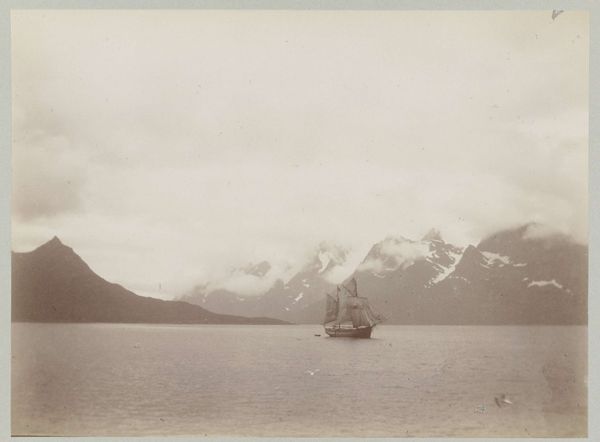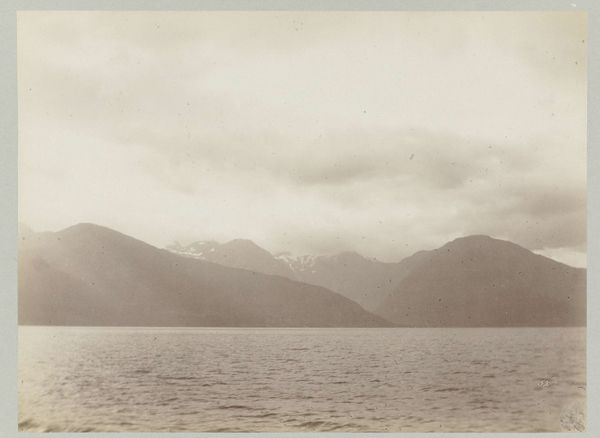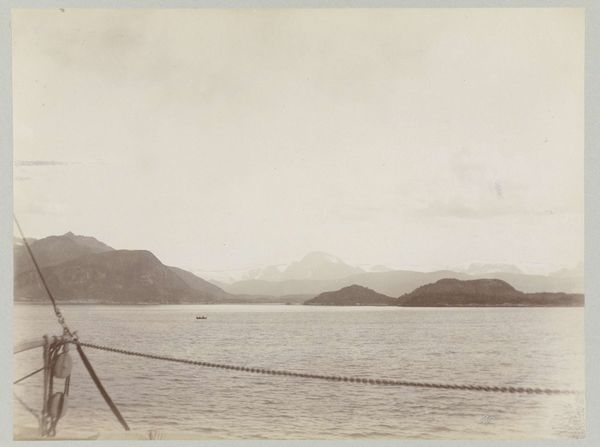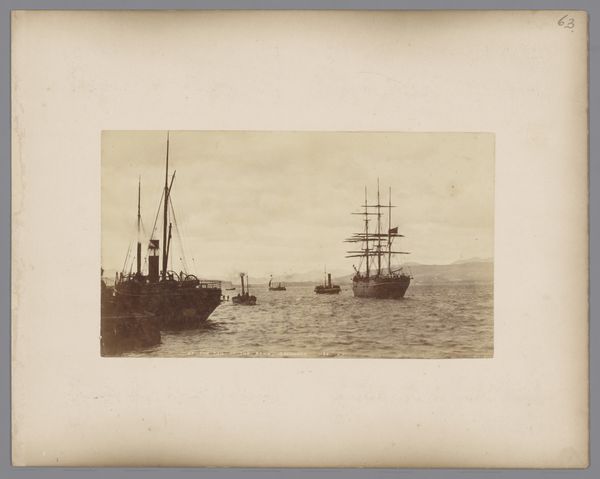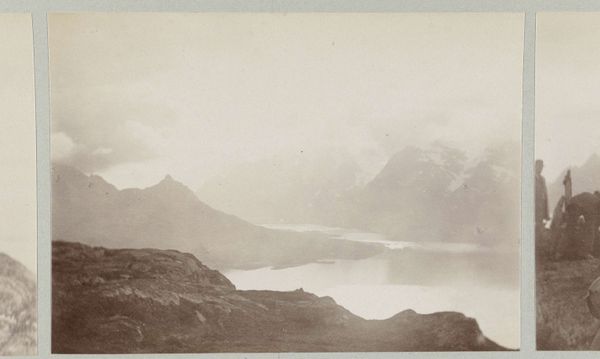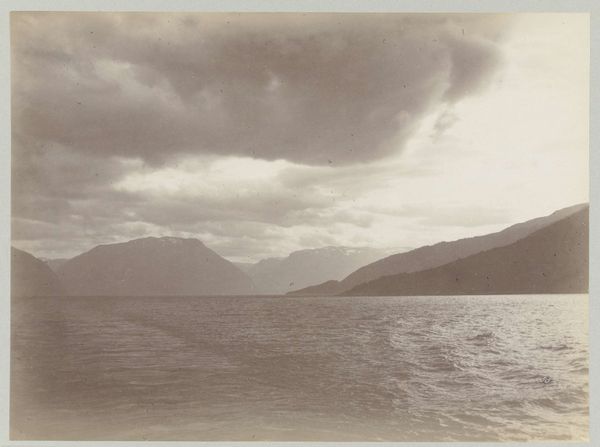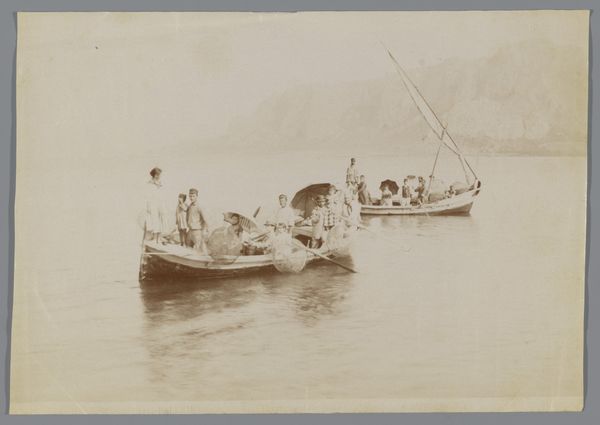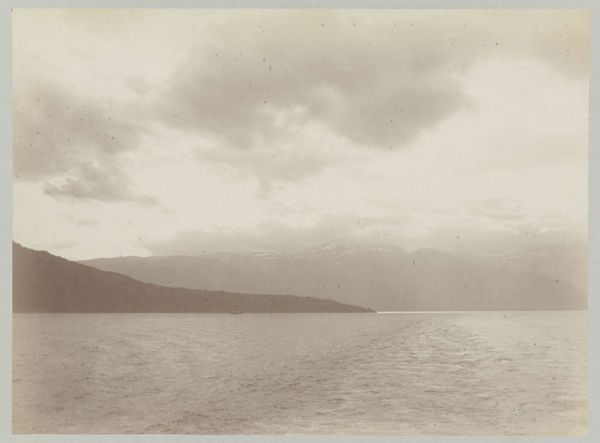
photography
#
still-life-photography
#
impressionism
#
landscape
#
nature
#
photography
#
watercolor
#
realism
Dimensions: height 169 mm, width 224 mm, height 314 mm, width 450 mm
Copyright: Rijks Museum: Open Domain
Curator: Here, we have a photographic landscape from 1889 by Paul Güssfeldt, titled “Schip in een baai te Noorwegen met aan nabij een aantal roeiboten” or “Ship in a bay in Norway with several rowboats nearby." Editor: It's strikingly subdued. The almost monochromatic palette evokes a feeling of isolation, doesn't it? Curator: Indeed. The tonality certainly sets a contemplative mood. Notice how Güssfeldt meticulously organizes the scene—the ship acts as the central vertical element, offset by the horizontal sweep of the water and distant mountains. The composition uses a shallow depth of field to emphasize flatness. Editor: I find it hard to look past that the central presence, the ship, is one deeply embedded within systems of colonization. How do we reconcile this picturesque scene with its political implications? Curator: That's a very valid question. We must acknowledge that landscape photography, like other genres, is never neutral. It's not simply about recording nature but framing it, often in ways that served specific cultural and political agendas. The choice to focus on ships and industry speaks volumes about society during this period. Editor: The medium itself – photography – further complicates the narrative. Though perceived as objective, photographs like this were deliberately crafted to construct particular perceptions. Were images like these distributed widely to foster colonial ambitions and economic gains? I wonder what kind of narratives these photographs have facilitated over time. Curator: Exactly! We're prompted to examine whose gaze is prioritized. Güssfeldt’s positioning of the ship against the serene backdrop potentially romanticizes maritime exploration and its impact. It's worth reflecting on how that visual language shaped understanding. Editor: And by extension, obscured alternative perspectives—those of the people whose lands and waters were impacted by those very ships. These artistic renditions carry complex messages. It’s critical for institutions and archives to unpack all. Curator: That intersectional lens, bridging aesthetics with historical and political realities, is key. Thank you. Editor: Always important to look and see what isn't in the frame as much as what is.
Comments
No comments
Be the first to comment and join the conversation on the ultimate creative platform.
